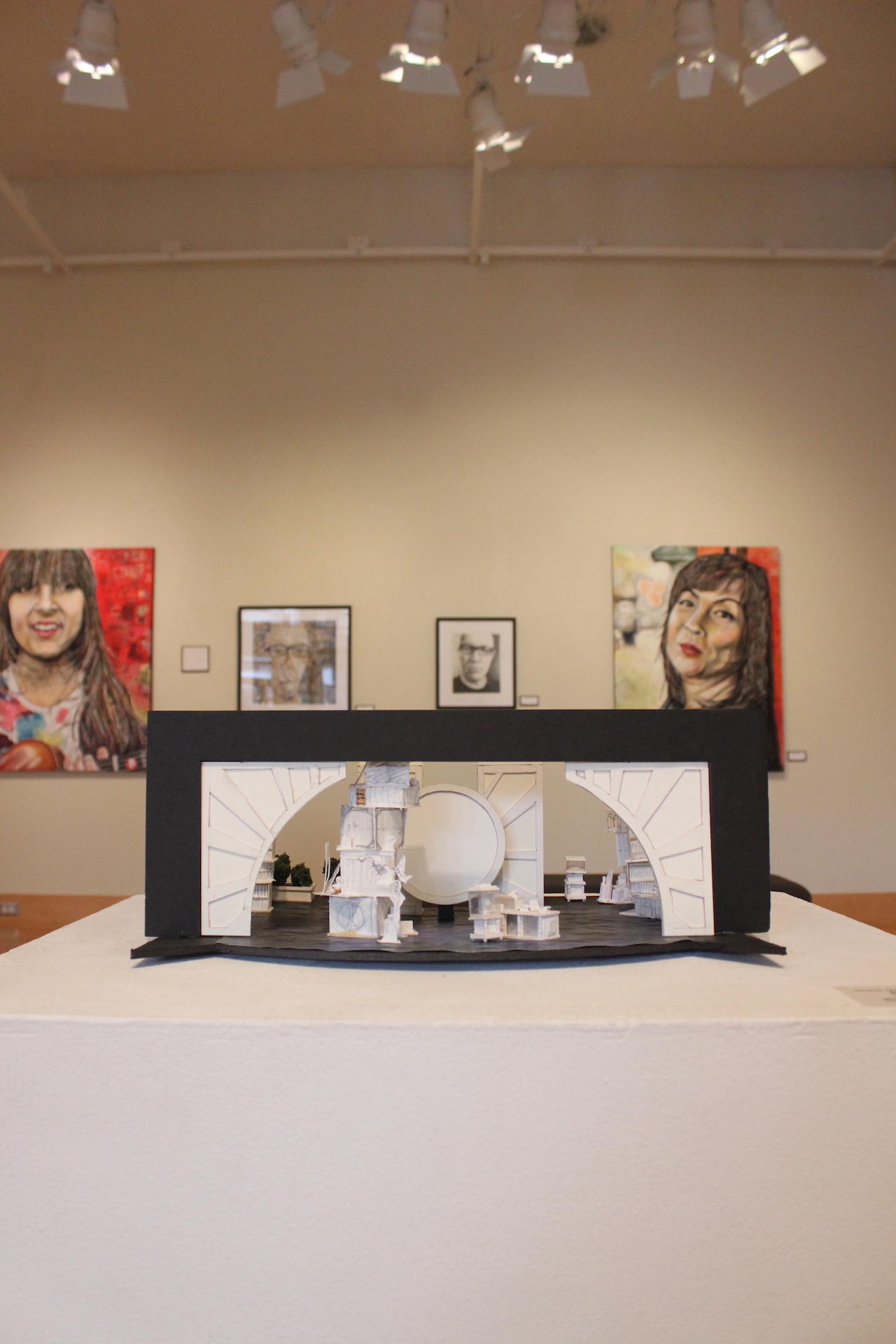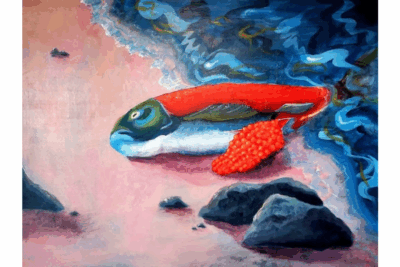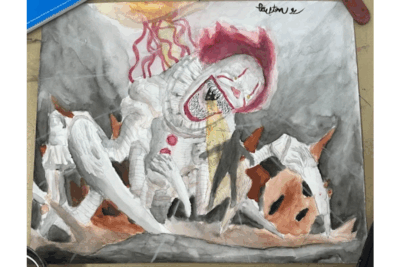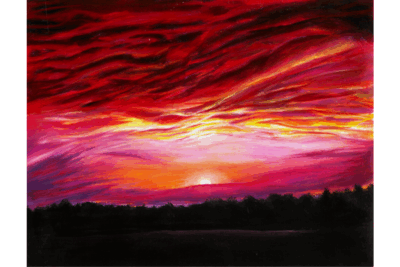While the current artists showcasing work in the Hershberger Art Gallery differ on many things, they have one fundamental commonality: their first name.
David Kendall, a visual artist, filmmaker and educator at Goshen College, and Dave Nofsinger, an assistant professor in Western Michigan University’s Department of Theatre, both have visual art from throughout their careers featured in the Music Center’s gallery throughout the next couple of months.Although the bulk of their pieces differ in medium — Nofsinger’s representing his work as a set designer and Kendall’s focusing on 2-D drawings — both carry a playful and whimsical quality about them, emphasizing detail and depth in their depictions of their creators’ lives.
“I have always been charmed by the whimsical illustrations in children’s books,” said Kendall.
Take but a brief glance at his work and it’s indisputable. The largest pieces in Kendall’s section of the exhibit quickly draw the eye and the onlooker alike closer to investigate. The portraits, one candidly depicting a woman and the other a young girl, explode in color and depth, combining layers of collage and mixed media with delicate brush stroke overlay to define the details.
“For me, layers both hide and reveal the meaning in the artwork,” he said. “Whether it’s texturing a small pen and ink drawing or adhering pieces of collage to a large mixed media portrait, I often find myself suspended somewhere between dream and reality as I work.”
The remainder of Kendall’s pieces in the gallery align with the imaginative ideas shown in the portraits, but expand into other media such as acrylic and watercolor painting as well as intricate micron pen drawings. The latter form a 30-piece series that he created from 1999 to 2000, which his wife calls his “Vintage Noir” pieces. The small drawings show a variety of figures, all depicted as highly detailed and in somewhat dismal lighting, somewhat reminiscent of an illustration by Maurice Sendak, author and illustrator of the 1963 children’s book, Where the Wild Things Are.
That highly detailed style of drawing also finds its way into Nofsinger’s set drawings and models. Brainstorming sketches and inspirations from various theatrical productions cluster on the northern wall of the gallery, depicting everything from bicycles to forest backdrops in crisp, black lines.
“I do not create works of art for the sake of their aesthetic quality alone, but to create a production event,” Nofsinger said. “My work must help tell a story and become an interactive playground for the actors.”
Nofsinger’s designs are, without a doubt, just that. The center of the gallery exhibit showcases a number of scaled-down replicas of stage settings that he designed. Each mock-up shows a setting in which both the audience and the actor can enjoy themselves through different stage levels and eye-drawing lines.
A number of the sets include soft and flowing lines rather than sharp angles, which keeps the audience’s eye moving through the space as the story unfolds, without being a distraction from the performative aspect. In the case of Nofsinger’s Two Gentlemen of Verona set, it also helps to create the illusion of a more complex and cohesive set without having to crowd the stage with additional set or prop pieces.
“I approach scenery design as a blend of the objectives for sculpture, painting, drawing, drafting, performance, and literature,” said Nofsinger. “I strive to design interesting, balanced and appropriately focused artwork that will be used by a production team to tell a story.”
The exhibit will be featured in the Hershberger Art Gallery until March 15. A reception will take place on Sunday, Jan. 26 from 2-3:30 p.m., followed by an artist talk at 3:30 p.m. For more information about the gallery, go to goshen.edu/academics/art/hershberger-art-gallery/#exhibits.



